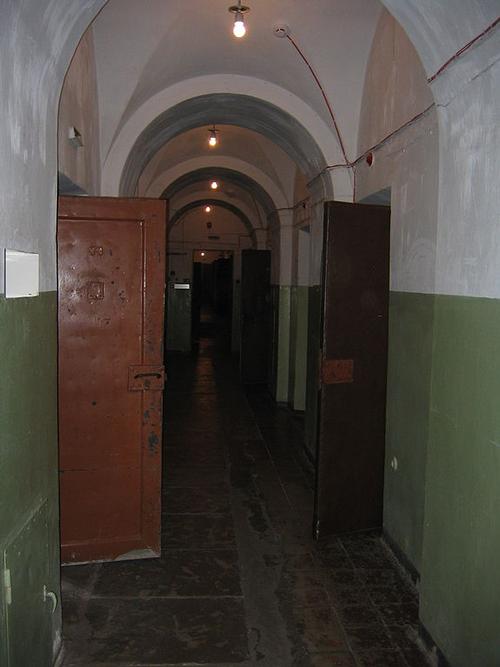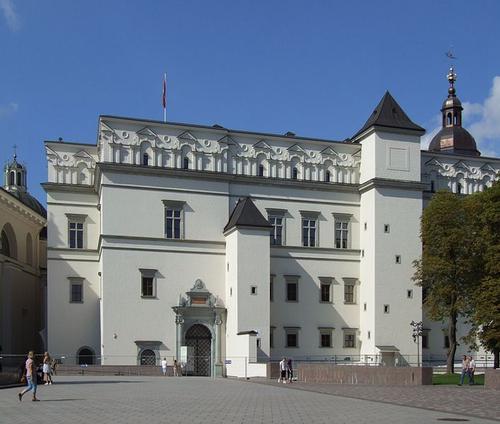LITHUANIA
Vilnius

Vilnius
Vilnius
Vilnius, the capital of the Baltic state of Lithuania, is relatively unknown. Nevertheless, Vilnius is in no way inferior to other European capitals. The historical centre of the city belongs to the World Heritage List of Unesco. Besides that, the city has a very rich history and Vilnius has a lot to offer to culture lovers.
 VilniusPhoto: Umnik in the public domain
VilniusPhoto: Umnik in the public domain
Locations
Vilnius is located in the southeast of Lithuania, the southernmost country of the Baltic States. The city has an area of 9,760 km² and around 543,000 inhabitants. The River Neris flows through the city. Vilnius is the centre of the country, of Lithuanian politics and the centre of the country's economy.
Weather
Lithuania has a temperate maritime climate according to the Köppen system. The average annual temperature of the city is about 6 degrees above zero. Winters in Vilnius are cold and last longer than in the Netherlands. The temperature regularly drops below -25 degrees! In the winter months the city is often hidden under a thick layer of snow. Especially in the historical inner city, this provides a fairy-tale like sight. In the summer, the weather is usually pleasant in the city.
The average summer temperature is 17 degrees, but occasionally maximums up to 30 degrees occur. A lot of rain can fall in the summer months..
History
 Vilnius map from 1576Photo: Public Domain
Vilnius map from 1576Photo: Public Domain
Vilnius was founded in the 14th century by Grand Duke Gediminas, but the area was already inhabited before then. In the sixteenth and early seventeenth centuries, when Lithuania belonged to Poland, Vilnius flourished. Lithuania attracted many immigrants at that time and a large part of the population was Jewish. In 1579, Vilnius University was founded, now one of the oldest universities in Europe.
From 1772 to 1793, part of the Polish-Lithuanian Commonwealth fell to Russia and Austria. In 1918, Lithuania declared independence. This was only accepted by Russia in 1920 in the Treaty of Moscow. But after that, Vilnius became a point of contention again between Poland and Lithuania.
Right after the beginning of the Second World War in 1939, the Soviet army occupied Vilnius. In October of that year Stalin decided to return the captured territory to Lithuania on the condition that Russia would establish a number of Red Army bases there. In practice, Russia continued to rule Vilnius. Even after the war, Vilnius remained part of the Soviet Union and finally regained its independence in 1991. This happened during a revolt of the population in which many people were killed and wounded, but eventually the Lithuanian people won.
Sights
 St Kazimero VilniusPhoto: Pudelek (Marcin Szala) CC 3.0 Unported no changes made
St Kazimero VilniusPhoto: Pudelek (Marcin Szala) CC 3.0 Unported no changes made
Vilnius is full of beautiful, mostly historical buildings. Architecture lovers will be in for a treat. A great church to visit is the St. Kazimero Church. The church dates back to 1604. The church has three beautiful Baroque altars. The richly decorated building is literally crowned (the family crown of Jogailaitus) with a golden crown on the spire. There are more than 100 church buildings in Vilnius. Apart from Catholic ones, there are also Orthodox churches and one synagogue. Before the Second World War there were about 100 synagogues for a Jewish population of 100,000. Today there are still 5000 Jews living in Vilnius.
 Gedimas castleVilniusPhoto: Wojsyl CC 3.0 Unported no changes made
Gedimas castleVilniusPhoto: Wojsyl CC 3.0 Unported no changes made
Another impressive building is the centuries-old Gediminas Castle. It houses a historical museum. The castle dates back to the 14th century and was restored between 1956 and 1960. The western tower of the Upper Castle is called the Gediminas Tower. It has an octagonal design, with stone walls and the foundation is in a Gothic style. Near the tower there are some remains of the palace. You can also climb to the top of the tower and enjoy a wide view of Vilnius.
 KGB museum VilniusPhoto: Sean Hayford O'Leary CC 2.0 Generic no changes made
KGB museum VilniusPhoto: Sean Hayford O'Leary CC 2.0 Generic no changes made
In the KGB museum, actually called the Museum of Genocide Victims, you can learn a lot about the dark Soviet history of Vilnius. You can see cells where Lithuanians were detained awaiting deportation to Siberia. You can see the torture chambers, isolation cells and the execution chamber, where more than 100 Lithuanians were killed. You can also take a guided tour with an ex-prisoner, but be quick, because the ex-prisoners have reached an advanced age. An impressive experience!
 Palace of the Grand Duke of Lithuania in VliniusPhoto: Pudelek(Marcin Szala) CC 3.0 Unported no changes made
Palace of the Grand Duke of Lithuania in VliniusPhoto: Pudelek(Marcin Szala) CC 3.0 Unported no changes made
The Palace of the Grand Duke of Lithuania is located in the lower castle near the Vilnius Cathedral. The palace was built in the 15th century and was demolished in 1801. In July 2013, the fully refurbished building reopened to the public. In the new palace, you can visit an exhibition about the historical and architectural development of the palace over the centuries. You can also see reconstructed rooms from the Gothic and Renaissance periods.
Tips
 KoldunaiFoto: Unknown CC 3.0 Unported no changes made
KoldunaiFoto: Unknown CC 3.0 Unported no changes made
When visiting Vilnius, you should definitely eat koldunai. This typical Lithuanian dish tastes like more. It is potato noodles filled with cheese, mushrooms or meat. Most authentic dishes are very high in calories.
Useful links Vilnius
BBC Country ProfilesWorld Fact Book Explore all Countries
How to call
Last updated December 2025
Copyright: Team - The World of Info